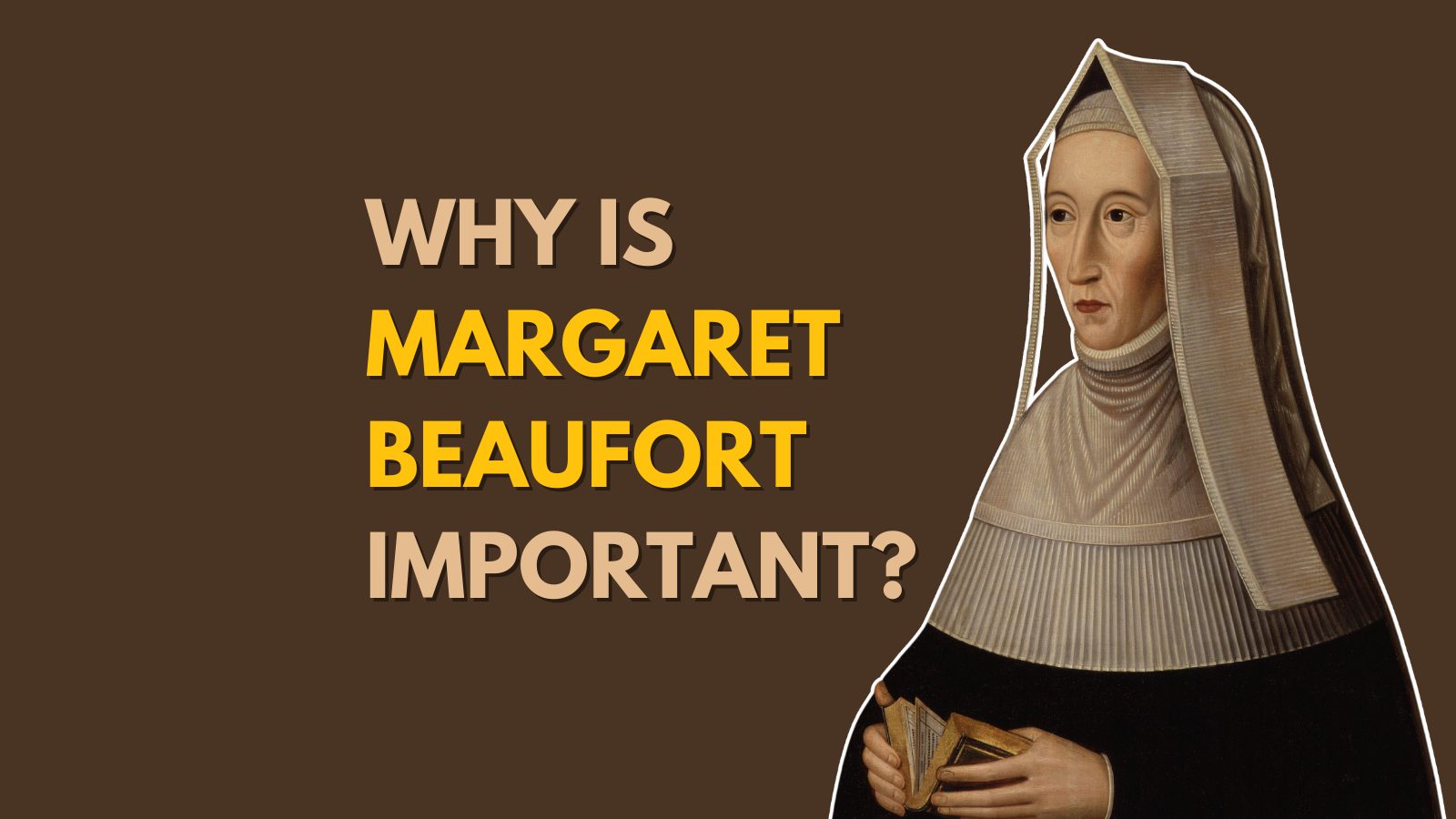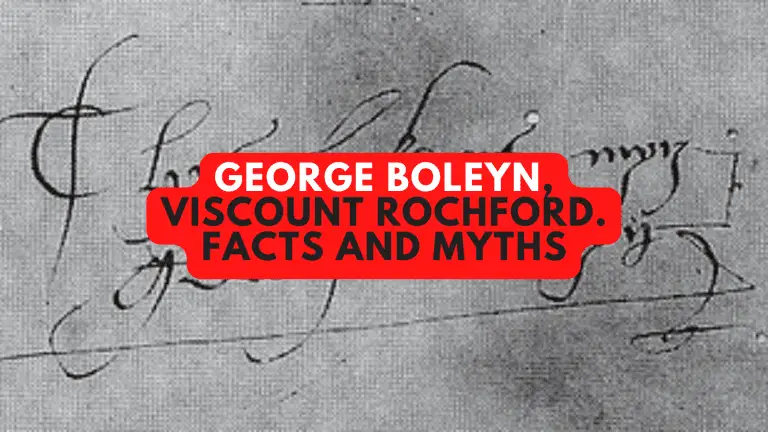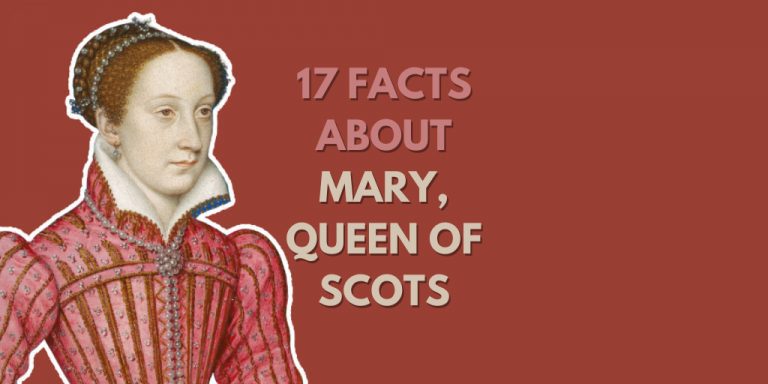Lady Margaret Beaufort – The mother of the Tudor dynasty who had four husbands
Lady Margaret Beaufort is important in English history because she is the matriarch of the infamous Tudor dynasty.
She was the mother of Henry VII, the first Tudor monarch. It was through Lady Margaret her son had his claim to the throne of England. (Albeit a rather weak claim to the throne.)
Fiction authors paint her as schemer who would stop at nothing to ensure her son, Henry Tudor, became King of England. Is that a fair depection of Lady Margaret, or was she reacting to the troubled times she lived in and was she fighting for her own survial?
[/et_pb_text][/et_pb_column][/et_pb_row][et_pb_row _builder_version=”4.15″ _module_preset=”default” global_colors_info=”{}”][et_pb_column type=”4_4″ _builder_version=”4.15″ _module_preset=”default” global_colors_info=”{}”][et_pb_text _builder_version=”4.15″ _module_preset=”default” global_colors_info=”{}”]Margaret Beaufort’s Family Tree
[/et_pb_text][/et_pb_column][/et_pb_row][et_pb_row _builder_version=”4.15″ _module_preset=”default” global_colors_info=”{}”][et_pb_column type=”4_4″ _builder_version=”4.15″ _module_preset=”default” global_colors_info=”{}”][et_pb_image src=”http://historywithhenry.com/wp-content/uploads/2022/02/Margaret-Beaufort-Stanley-1.png” alt=”Margaret Beaufort” title_text=”Margaret (Beaufort) Stanley (1)” _builder_version=”4.15″ _module_preset=”default” global_colors_info=”{}”][/et_pb_image][/et_pb_column][/et_pb_row][et_pb_row _builder_version=”4.15″ _module_preset=”default” global_colors_info=”{}”][et_pb_column type=”4_4″ _builder_version=”4.15″ _module_preset=”default” global_colors_info=”{}”][et_pb_text _builder_version=”4.15.0″ _module_preset=”default” global_colors_info=”{}”]At first glance, Margaret Beaufort’s family tree shows a direct line of descent through to Edward III. This is where the claim to the throne came from.
She was the daughter of John Beaufort, Duke of Somerset. The Grandson of John of Gaunt and Katherine Sywnford. Gaunt was the Duke of Lancaster and the third son of Edward III.
However, the problem arises with the marriage of John of Gaunt to Katherine Swynford.
Katherine Swynford was John of Gaunt’s long-term mistress. A relationship probably started when Swynford became governess to his children. They had a number of children together born out of wedlock, including a son, John.
When Gaunt’s second wife, Constance of Castile died, he married Katherine Swynford. The King allowed the Beaufort line to be legitimised.
However, there was one significant caveat, the Beaufort line could never inherit the throne of England.
John Beaufort’s line descended a number of generations before ending up with a sole heir – Lady Margaret Beaufort.
Hence, after his victory at the Battle of Bosworth, Lady Margaret’s son, Henry VII took significant steps to shore up his claim to the throne.
Henry VII claimed the throne through Right of Conquest not through the Beaufort line. In other words, his army had defeated the army of Richard III – so he was now the rightful King.
He was crowned in Westminster Abbey on this basis.
Then Henry VII married Elizabeth of York, the daughter of Edward IV. This was a significant step. Elizabeth was a strong claimant to the throne in her own right. The merged claim between the House of Lancaster and the House of York was very strong. Just to be extra sure Henry VII about his claim. produced elaborate charts highlighting his descent, allegedly back to King Arthur. A man who simply did not exist.
[/et_pb_text][/et_pb_column][/et_pb_row][et_pb_row _builder_version=”4.15.0″ _module_preset=”default” global_colors_info=”{}”][et_pb_column type=”4_4″ _builder_version=”4.15.0″ _module_preset=”default” global_colors_info=”{}”][et_pb_video src=”https://youtube.com/shorts/PI6j9t6d4lk?feature=share” _builder_version=”4.15.0″ _module_preset=”default” global_colors_info=”{}”][/et_pb_video][/et_pb_column][/et_pb_row][et_pb_row _builder_version=”4.15″ _module_preset=”default” global_colors_info=”{}”][et_pb_column type=”4_4″ _builder_version=”4.15″ _module_preset=”default” global_colors_info=”{}”][et_pb_text _builder_version=”4.15.0″ _module_preset=”default” global_colors_info=”{}”]Lady Margaret Beaufort had four husbands
[/et_pb_text][/et_pb_column][/et_pb_row][et_pb_row _builder_version=”4.15.0″ _module_preset=”default”][et_pb_column _builder_version=”4.15.0″ _module_preset=”default” type=”4_4″][et_pb_image src=”http://historywithhenry.com/wp-content/uploads/2022/08/four-husbands-of-margaret-beaufort.png” _builder_version=”4.15.0″ _module_preset=”default” alt=”Margaret Beaufort Spouses” title_text=”four husbands of margaret beaufort” align=”center” max_width=”51%” hover_enabled=”0″ sticky_enabled=”0″][/et_pb_image][/et_pb_column][/et_pb_row][et_pb_row _builder_version=”4.15″ _module_preset=”default” global_colors_info=”{}”][et_pb_column type=”4_4″ _builder_version=”4.15″ _module_preset=”default” global_colors_info=”{}”][et_pb_text _builder_version=”4.15.0″ _module_preset=”default” global_colors_info=”{}”]The principal Beaufort line ended with Lady Margaret. She was the heiress to the vast Beaufort estates, making her highly wealthy. Lady Margaret had a unique place as a member of the House of Lancaster and could trace her descent back to Edward III. This meant there was no shortage of suitors for her hand in marriage.
So who were Lady Margaret Beaufort’s spouses?
Her first marriage took place when she was only a child. At three years of age, she married John de la Pole, son of the Duke of Suffolk. This was, of course, a marriage simply to link two great families. Three years later, the marriage was dissolved.
The second marriage was to Edmund Tudor. Edmund Tudor was the half brother of King Henry VI. Edmund was the son of the king’s mother, Catherine Valois and Owen Tudor, her second husband. Despite the fact he was brother to the king, Edmund Tudor had no claim on the English throne whatsoever.
She was just 12 years of age when she married Edmund Tudor. He was 24. Of course, we should not judge relationships by our own standards; times were very different.
It was the start of the Wars of the Roses. She fell pregnant almost immediately after the wedding. However, Edmund, also part of the Lancastrian side of the royal house, was taken prisoner by the House of York. He died of plague in captivity, leaving the now 13-year-old Lady Margaret a widow and pregnant.
It is believed that the birth was long and arduous. However, Henry Tudor was born on the 28th of January 1457 at Pembroke Castle. The delivery likely left her unable to have further children.
Lady Margaret Beaufort married Henry Stafford, one of the sons of the Duke of Buckingham, on the 3rd of January 1458 at the age of 14.
Again, the Wars of the Roses claimed another of Lady Margaret’s husbands. Stafford died of his wounds at the Battle of Barnet. Interestingly, he was on the Yorkist side, not the Lancastrian side. It shows the complexity of family loyalties during the wars of the roses and how leading figures had to adapt to survive.
Lady Margaret married for the final time to Thomas Stanley in June 1472. It was believed that the marriage was principally one of convenience. It was the only one that was engineered by Margaret.
Thomas Stanley and his brother William were instrumental in Henry Tudor’s victory at the Battle of Bosworth; they switched sides on the morning to join Margaret’s son, Henry Tudor.
Stanley died in 1504. Although after Henry VII’s victory at Bosworth, he spent little time with his wife.
[/et_pb_text][/et_pb_column][/et_pb_row][et_pb_row _builder_version=”4.15″ _module_preset=”default” global_colors_info=”{}”][et_pb_column type=”4_4″ _builder_version=”4.15″ _module_preset=”default” global_colors_info=”{}”][et_pb_text _builder_version=”4.15″ _module_preset=”default” global_colors_info=”{}”]She always had a close relationship with her son
[/et_pb_text][/et_pb_column][/et_pb_row][et_pb_row _builder_version=”4.15″ _module_preset=”default” global_colors_info=”{}”][et_pb_column type=”4_4″ _builder_version=”4.15″ _module_preset=”default” global_colors_info=”{}”][et_pb_text _builder_version=”4.15.0″ _module_preset=”default” global_colors_info=”{}”]The fact that she gave birth to her only son, Henry Tudor when she was just 13 years of age probably contributed to her enjoying a very close relationship with him. They could almost have been brother and sister instead of mother and son.
Even during his years in exile in various other European countries, Lady Margaret made steps to try and progress his cause over in England.
Sometimes that meant swallowing her pride and being submissive to the house of York. She even carried the train of Anne Neville, Richard III’s Queen, at the coronation.
However, she never drifted from believing that her son would one day be king. According to legend, she introduced her son to Henry VI, who said that one day the boy would be king. Henry VI was, however, well known for being mad. He also had a son of his own at the time. How true this legend is, is a matter for debate, but it has been good fodder for fiction writers over the years.
Throughout Henry Tudor’s life, she was the one constant he would turn to for advice.
[/et_pb_text][/et_pb_column][/et_pb_row][et_pb_row _builder_version=”4.15″ _module_preset=”default” global_colors_info=”{}”][et_pb_column type=”4_4″ _builder_version=”4.15″ _module_preset=”default” global_colors_info=”{}”][et_pb_text _builder_version=”4.15″ _module_preset=”default” global_colors_info=”{}”]Margaret Beaufort survived the wars of the roses
[/et_pb_text][/et_pb_column][/et_pb_row][et_pb_row _builder_version=”4.15″ _module_preset=”default” global_colors_info=”{}”][et_pb_column type=”4_4″ _builder_version=”4.15″ _module_preset=”default” global_colors_info=”{}”][et_pb_text _builder_version=”4.15″ _module_preset=”default” global_colors_info=”{}”]For a woman in such a prominent position, Margaret Beaufort did well to survive the Wars of the Roses with her head on her shoulders. On more than one occasion, she was accused of plotting against the king. However, thanks to her husbands, she managed to safely navigate a way through it until her son’s ultimate victory at the Battle of Bosworth.[/et_pb_text][/et_pb_column][/et_pb_row][et_pb_row _builder_version=”4.15″ _module_preset=”default” global_colors_info=”{}”][et_pb_column type=”4_4″ _builder_version=”4.15″ _module_preset=”default” global_colors_info=”{}”][et_pb_text _builder_version=”4.15″ _module_preset=”default” global_colors_info=”{}”]My Lady the King’s Mother
[/et_pb_text][/et_pb_column][/et_pb_row][et_pb_row _builder_version=”4.15″ _module_preset=”default” global_colors_info=”{}”][et_pb_column type=”4_4″ _builder_version=”4.15″ _module_preset=”default” global_colors_info=”{}”][et_pb_text _builder_version=”4.15″ _module_preset=”default” global_colors_info=”{}”]After Henry VII’s victory at the Battle of Bosworth and the death of Richard III, Margaret Beaufort became styled My Lady the King’s Mother. She took precedence over all the women at court, including the new Queen, Elizabeth of York. She even began signing her letters Margaret R in the style of a Monarch. In many ways, she was the ultimate power behind the throne.[/et_pb_text][/et_pb_column][/et_pb_row][et_pb_row _builder_version=”4.15.0″ _module_preset=”default” global_colors_info=”{}”][et_pb_column type=”4_4″ _builder_version=”4.15.0″ _module_preset=”default” global_colors_info=”{}”][et_pb_image src=”http://historywithhenry.com/wp-content/uploads/2022/08/Enrique_VII_de_Inglaterra_por_un_artista_anonimo-218×300.jpg” title_text=”Henry VII” align=”center” _builder_version=”4.15.0″ _module_preset=”default” global_colors_info=”{}”][/et_pb_image][/et_pb_column][/et_pb_row][et_pb_row _builder_version=”4.15″ _module_preset=”default” global_colors_info=”{}”][et_pb_column type=”4_4″ _builder_version=”4.15″ _module_preset=”default” global_colors_info=”{}”][et_pb_text _builder_version=”4.15″ _module_preset=”default” global_colors_info=”{}”]She was famed for her piety
[/et_pb_text][/et_pb_column][/et_pb_row][et_pb_row column_structure=”1_5,3_5,1_5″ _builder_version=”4.15″ _module_preset=”default” global_colors_info=”{}”][et_pb_column type=”1_5″ _builder_version=”4.15″ _module_preset=”default” global_colors_info=”{}”][/et_pb_column][et_pb_column type=”3_5″ _builder_version=”4.15″ _module_preset=”default” global_colors_info=”{}”][et_pb_image src=”http://historywithhenry.com/wp-content/uploads/2022/02/1-1.png” alt=”Margaret Beaufort” title_text=”1″ _builder_version=”4.15″ _module_preset=”default” global_colors_info=”{}”][/et_pb_image][/et_pb_column][et_pb_column type=”1_5″ _builder_version=”4.15″ _module_preset=”default” global_colors_info=”{}”][/et_pb_column][/et_pb_row][et_pb_row _builder_version=”4.15″ _module_preset=”default” global_colors_info=”{}”][et_pb_column type=”4_4″ _builder_version=”4.15″ _module_preset=”default” global_colors_info=”{}”][et_pb_text _builder_version=”4.15″ _module_preset=”default” global_colors_info=”{}”]In the vast majority of portraits Margaret Beaufort is depicted wearing the outfit of a nun. She would often spend many hours at prayer and would fast on regular occasions. She had her own personal confessor, John Fisher. John Fisher would go on to become a bishop and a cardinal. Her grandson Henry VIII would execute him for failing to take the oath of supremacy.[/et_pb_text][/et_pb_column][/et_pb_row][et_pb_row _builder_version=”4.15″ _module_preset=”default” global_colors_info=”{}”][et_pb_column type=”4_4″ _builder_version=”4.15″ _module_preset=”default” global_colors_info=”{}”][et_pb_text _builder_version=”4.15″ _module_preset=”default” global_colors_info=”{}”]Margaret Beaufort was a fan of education
[/et_pb_text][/et_pb_column][/et_pb_row][et_pb_row _builder_version=”4.15″ _module_preset=”default” global_colors_info=”{}”][et_pb_column type=”4_4″ _builder_version=”4.15″ _module_preset=”default” global_colors_info=”{}”][et_pb_text _builder_version=”4.15″ _module_preset=”default” global_colors_info=”{}”]Margaret was keen to promote education and funded colleges at Cambridge. She enlarged God’s House and called it Christ’s College. After her death, St John’s College was founded by her estate. She also began the oldest professorship at Cambridge – Lady Margaret’s Professor of Divinity. She also founded a school meant for everyday people at Wimborne.[/et_pb_text][/et_pb_column][/et_pb_row][et_pb_row _builder_version=”4.15″ _module_preset=”default” global_colors_info=”{}”][et_pb_column type=”4_4″ _builder_version=”4.15″ _module_preset=”default” global_colors_info=”{}”][et_pb_text _builder_version=”4.15″ _module_preset=”default” global_colors_info=”{}”]Regent of England
[/et_pb_text][/et_pb_column][/et_pb_row][et_pb_row _builder_version=”4.15″ _module_preset=”default” global_colors_info=”{}”][et_pb_column type=”4_4″ _builder_version=”4.15″ _module_preset=”default” global_colors_info=”{}”][et_pb_text _builder_version=”4.15″ _module_preset=”default” global_colors_info=”{}”]After her son’s death, her grandson Henry VIII became King of England. However, Henry was still a matter of months away from his 18th birthday.
This presented a problem. Until he was 18, Henry technically needed a regent to rule instead.
Margaret Beaufort assumed this role. Because Henry was almost at “age”, it was purely for ceremonial reasons. But Lady Margaret Beaufort was Regent of England.
She was instrumental in the assembly of Henry VIII’s first council and in his choice of wife, Catherine of Aragon.
[/et_pb_text][/et_pb_column][/et_pb_row][et_pb_row _builder_version=”4.15″ _module_preset=”default” global_colors_info=”{}”][et_pb_column type=”4_4″ _builder_version=”4.15″ _module_preset=”default” global_colors_info=”{}”][et_pb_text _builder_version=”4.15.0″ _module_preset=”default” global_colors_info=”{}”]The death of Lady Margaret Beaufort
[/et_pb_text][/et_pb_column][/et_pb_row][et_pb_row _builder_version=”4.15″ _module_preset=”default” global_colors_info=”{}”][et_pb_column type=”4_4″ _builder_version=”4.15″ _module_preset=”default” global_colors_info=”{}”][et_pb_text _builder_version=”4.15.0″ _module_preset=”default” global_colors_info=”{}”]Lady Margaret’s death could not have been stranger, at least in terms of timing.
Just one day after Henry VIII’s birthday and him being able to rule England without a regent, Margaret died.
She’d been ill for several days, as legend has it, after eating a cygnet for dinner.
It seems almost poetic that she managed to hang on to allow her grandson to firmly grasp the Crown with both hands before she died.
[/et_pb_text][/et_pb_column][/et_pb_row][et_pb_row _builder_version=”4.15″ _module_preset=”default” global_colors_info=”{}”][et_pb_column type=”4_4″ _builder_version=”4.15″ _module_preset=”default” global_colors_info=”{}”][et_pb_text _builder_version=”4.15″ _module_preset=”default” global_colors_info=”{}”]Margaret Beaufort’s Tomb
[/et_pb_text][/et_pb_column][/et_pb_row][et_pb_row column_structure=”1_5,3_5,1_5″ _builder_version=”4.15″ _module_preset=”default” global_colors_info=”{}”][et_pb_column type=”1_5″ _builder_version=”4.15″ _module_preset=”default” global_colors_info=”{}”][/et_pb_column][et_pb_column type=”3_5″ _builder_version=”4.15″ _module_preset=”default” global_colors_info=”{}”][et_pb_image src=”http://historywithhenry.com/wp-content/uploads/2022/02/2-1.png” alt=”Margaret Beaufort” title_text=”2″ _builder_version=”4.15″ _module_preset=”default” global_colors_info=”{}”][/et_pb_image][/et_pb_column][et_pb_column type=”1_5″ _builder_version=”4.15″ _module_preset=”default” global_colors_info=”{}”][/et_pb_column][/et_pb_row][et_pb_row _builder_version=”4.15″ _module_preset=”default” global_colors_info=”{}”][et_pb_column type=”4_4″ _builder_version=”4.15″ _module_preset=”default” global_colors_info=”{}”][et_pb_text _builder_version=”4.15.0″ _module_preset=”default” global_colors_info=”{}”]Margaret Beaufort was buried in Westminster Abbey. As the mother of Henry VII it is appropriate that she lies with the vast majority of the Tudor monarchs in his chapel. She lies close to the body of Mary Queen of Scots.
The bronze sculpture was created by Pietro Torrigiano.
The inscription on Margaret’s tomb was written by Erasmus. It reads…
“Margaret, Countess of Richmond, mother of Henry VII, grandmother of Henry VIII, who donated funds for three monks of this abbey, a grammar school in Wimborne, a preacher in the whole of England, two lecturers in Scripture, one at Oxford, the other at Cambridge, where she also founded two colleges, one dedicated to Christ, and the other to St John, the Evangelist.”
Interestingly the inscription is slightly incorrect, as she was Countess of Richmond and Derby.
[/et_pb_text][/et_pb_column][/et_pb_row][/et_pb_section]





